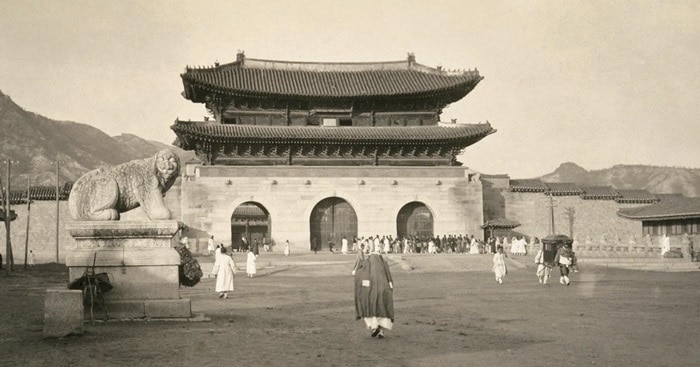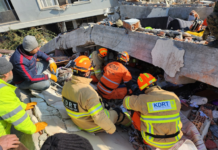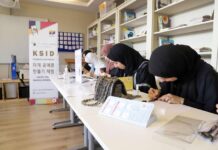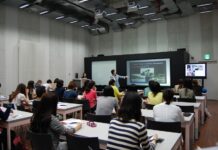
Gwanghwamun Square in central Seoul will expand to 69,300 square meters with the establishment of a ‘citizens’ square’ and a ‘history square.’ Pictured is a flea market for non-Koreans at Gwanghwamun Square and along the adjacent Sejong-daero Boulevard in March 2013. (Korea.net DB)
By Kim Tae Won and Sohn JiAe
Gwanghwamun Square will return to its old look, transforming itself into a venue for all Seoulites.
The Seoul Metropolitan Government and the Cultural Heritage Administration (CHA) announced on April 10 their new plan to renovate the landmark square in central Seoul. As part of the plan, the open area will become 3.7 times larger, and, also, the Joseon-era woldae(月臺) ceremonial stage will be restored.
The square has been called “a huge median strip,” as it’s located linearly in the middle of the 5-lanes-in-each-direction Sejong-daero Boulevard. The city will also convert part of the car lanes along the western side, in front of the Sejong Center for the Performing Arts, into a pedestrian area called the “citizens’ square.”
Along Sajik-ro and Yulgok-ro streets, the car-only lanes immediately in front of the palace, a “history square” will be established just inside the palace walls, where the Joseon-era woldae stage will be constructed. The stone haetaiguardian animals in front of the gate will also remain there.
The “citizens’ square” will host a variety of programs to showcase arts and cultural heritage items, while the “history square” will welcome visitors with traditional programs, such as the changing of the royal guards.

The Seoul Metropolitan Government announced on April 10 its plan to expand Gwanghwamun Square by converting some of the car lanes in front of the Sejong Center for the Performing Arts into a pedestrian area. Pictured is an artist’s interpretation of what a future Gwanghwamun Square might look like. (Seoul Metropolitan Government)
With the expanded Gwanghwamun Square, the 10-lane boulevard will be narrowed down to six lanes,. According to the Seoul Metropolitan Government, it plans to disperse the redirected traffic flow by expanding nearby roads, all while ensuring more pedestrian space.
“The square is the heart of our nation and, also, a sacred place for democracy when our 17 million citizens showed to the world that the people are the owners of the nation,” said Seoul Mayor Park Won-soon. “The square will be reborn as one for the people. This transformation will lay the foundation for an ‘era of Gwanghwamun Square’ where citizens will become the owners of the nation.”

A Joseon-style plaza, set to be built in front of Gwanghwamun Gate, will have a ritual woldae stage and the haetai stone guardian animals will be restored to their traditional location. Pictured is the area in front of the gate photographed sometime in 1906 or 1907. (CHA)
twkim0717@korea.kr























